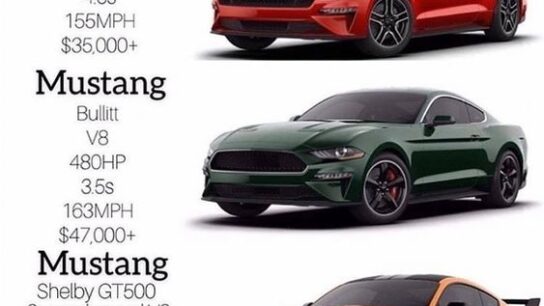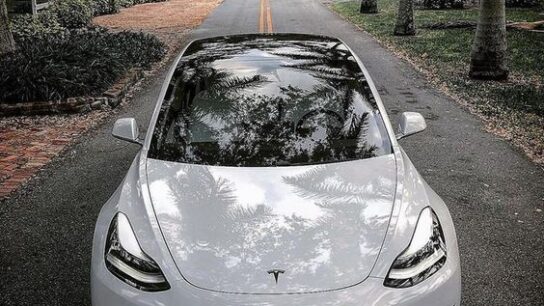The automotive industry has witnessed a profound transformation over the past century, evolving from the era of combustion engines to the dawn of electric power.Ultimate Evolution of Highway Cars As we drive into 2024, it’s clear that the evolution of highway cars reflects broader trends in technology, environmental awareness, and consumer preferences. In this blog, we’ll explore how highway cars have developed from early combustion engines to today’s cutting-edge electric vehicles (EVs), highlighting key milestones, technological advancements, and the future of sustainable driving.
The Early Days: Combustion Engines Take the Wheel
The Birth of the Combustion Engine
The history of highway cars begins with the invention of the internal combustion engine (ICE). In the late 19th century, pioneers like Karl Benz and Gottlieb Daimler introduced the first practical automobiles powered by gasoline engines. These early vehicles were revolutionary, replacing horse-drawn carriages and transforming transportation.
Key Innovations:
- The Benz Patent-Motorwagen (1886): Often considered the first true automobile, it featured a single-cylinder engine and a simple design.
- The Model T (1908): Henry Ford’s introduction of the Model T marked a significant milestone, as it was the first mass-produced car made affordable for the average consumer. Its success was driven by innovations in assembly line manufacturing.
Challenges of Early Combustion Engines
Despite their revolutionary impact, early combustion engines faced several challenges. Fuel efficiency was poor, emissions were high, and the reliance on fossil fuels posed environmental concerns. Additionally, the infrastructure for refueling and maintaining these vehicles was underdeveloped, making long-distance travel difficult.click here

The Rise of Highway Cars: The Mid-20th Century to the 21st Century
Post-War Innovations and the Rise of Highways
The mid-20th century saw significant advancements in highway cars, driven by post-war economic growth and technological innovations. Cars became more powerful, comfortable, and stylish. The expansion of highway systems, particularly in the United States, made long-distance travel more accessible.
Key Developments:
- Introduction of Turbocharging: In the 1970s, turbocharging technology was introduced, enhancing engine performance and efficiency.
- Advancements in Safety Features: Innovations such as seat belts, airbags, and anti-lock braking systems (ABS) improved vehicle safety and driver protection.
Environmental Concerns and Regulatory Changes
By the late 20th century, growing awareness of environmental issues led to increased regulatory measures aimed at reducing vehicle emissions. The introduction of catalytic converters and stricter emissions standards were steps towards mitigating the environmental impact of combustion engines.

The Turn of the Century: The Rise of Hybrid Technology
Hybrid Vehicles: A Bridge to Electric Power
As environmental concerns continued to grow, the automotive industry began exploring hybrid technology as a transitional solution. Hybrid vehicles combine a conventional internal combustion engine with an electric motor, offering improved fuel efficiency and reduced emissions.
Notable Hybrid Models:
- Toyota Prius (1997): The Toyota Prius was one of the first mass-produced hybrid vehicles and became a symbol of eco-friendly driving. It showcased the potential of combining electric power with traditional engines.
- Honda Insight (1999): Honda’s Insight was another early hybrid model, known for its aerodynamic design and fuel efficiency.
Impact of Hybrids on the Automotive Industry
Hybrid vehicles helped pave the way for the adoption of electric power. They demonstrated that it was possible to improve fuel efficiency and reduce emissions without fully abandoning the internal combustion engine. Additionally, hybrids offered a glimpse into the future of automotive technology and set the stage for the rise of electric vehicles.

The Advent of Electric Vehicles (EVs): Revolutionizing Highway Driving
The Shift to All-Electric Power
In the 21st century, the automotive industry has increasingly embraced electric power as a primary solution for sustainable driving. Electric vehicles (EVs) offer a cleaner alternative to traditional combustion engines, with zero tailpipe emissions and a growing range of features and benefits.
Key Milestones in EV Development:
- Tesla Roadster (2008): Tesla’s introduction of the Roadster marked a significant breakthrough in electric vehicle technology. It demonstrated that electric cars could offer high performance and long range, challenging the perception that EVs were impractical.
- Nissan Leaf (2010): The Nissan Leaf became one of the best-selling electric vehicles globally, offering an affordable and practical option for everyday driving.
Advancements in EV Technology:
- Improved Battery Technology: Advances in lithium-ion battery technology have led to longer ranges, faster charging times, and lower costs. New developments in solid-state batteries promise even greater improvements in energy density and safety.
- Expansion of Charging Infrastructure: The growth of public charging networks, including fast chargers and ultra-fast chargers, has made long-distance electric driving more feasible and convenient.
The Benefits of Electric Vehicles: Why the Shift Matters
Environmental Impact
One of the primary advantages of electric vehicles is their positive impact on the environment. Unlike combustion engines, EVs produce no tailpipe emissions, which helps reduce air pollution and greenhouse gas emissions. Additionally, as the electricity grid becomes greener with the integration of renewable energy sources, the environmental benefits of EVs will continue to increase.
Cost Savings and Efficiency
Electric vehicles offer several cost-saving benefits for drivers. They generally have lower operating costs compared to gasoline vehicles, thanks to lower fuel costs and reduced maintenance requirements. EVs have fewer moving parts, which means less wear and tear and fewer repairs.
Enhanced Driving Experience
Many drivers find electric vehicles to offer a superior driving experience. The instant torque provided by electric motors results in smooth and responsive acceleration. Additionally, EVs are often quieter and provide a more refined driving experience compared to traditional combustion engine vehicles.

The Future of Highway Cars: What Lies Ahead
Continued Technological Advancements
The future of highway cars will likely be shaped by continued advancements in technology. Innovations such as autonomous driving, vehicle-to-everything (V2X) communication, and advanced driver-assistance systems (ADAS) will enhance safety, convenience, and overall driving experience.
Growth of Sustainable Transportation
As the automotive industry moves towards sustainability, we can expect to see increased adoption of electric vehicles and other eco-friendly technologies. Government policies, incentives, and consumer demand will drive the transition towards a more sustainable transportation system.
Integration of Renewable Energy
The integration of renewable energy sources into the electricity grid will further enhance the environmental benefits of electric vehicles. Solar, wind, and other renewable energy sources will play a crucial role in reducing the carbon footprint of electric driving.
Conclusion
The evolution of highway cars from combustion engines to electric power represents a remarkable journey of technological innovation and environmental progress. From the early days of gasoline-powered vehicles to the rise of electric cars, each milestone has contributed to shaping the future of transportation.click here
As we continue to embrace electric power and sustainable driving solutions, the automotive industry is poised to make even greater strides in reducing our environmental impact and enhancing the driving experience. By understanding and appreciating the evolution of highway cars, we can better appreciate the advancements that drive us towards a cleaner, more efficient future on the road.
Embrace the future of driving with the knowledge that each step in the evolution of highway cars brings us closer to a more sustainable and eco-friendly world.






